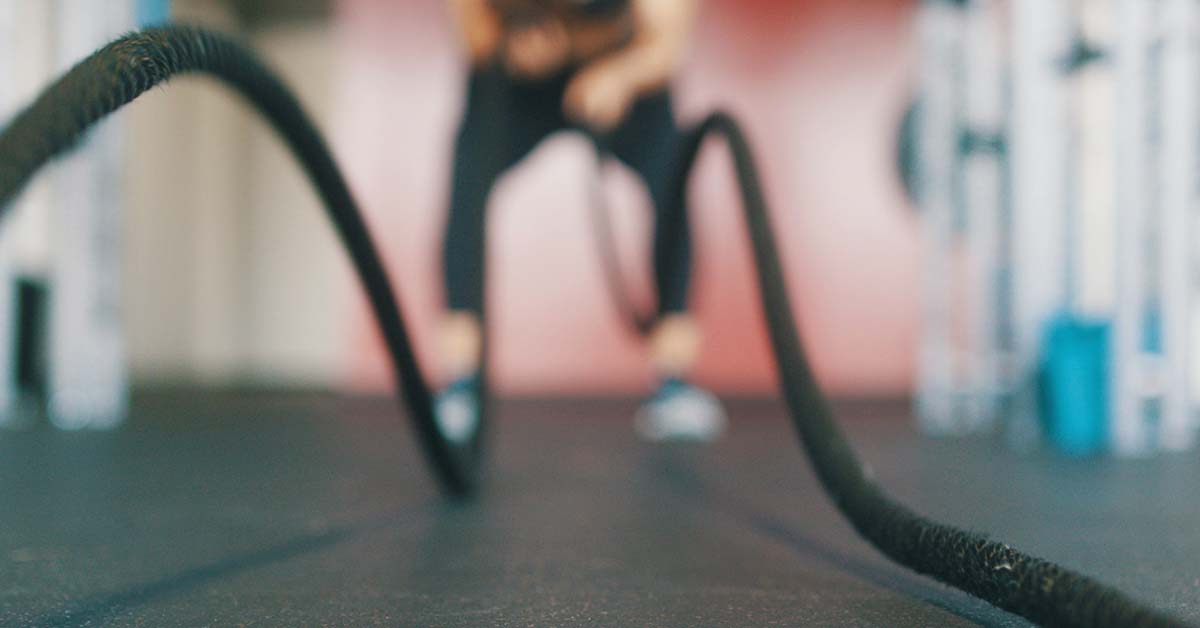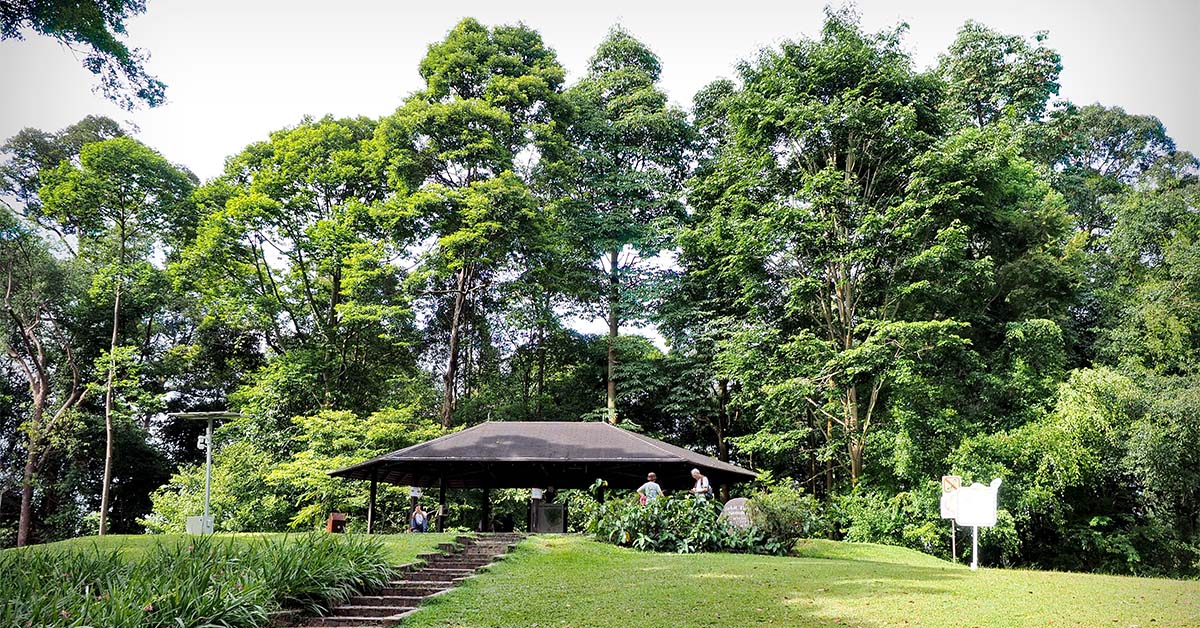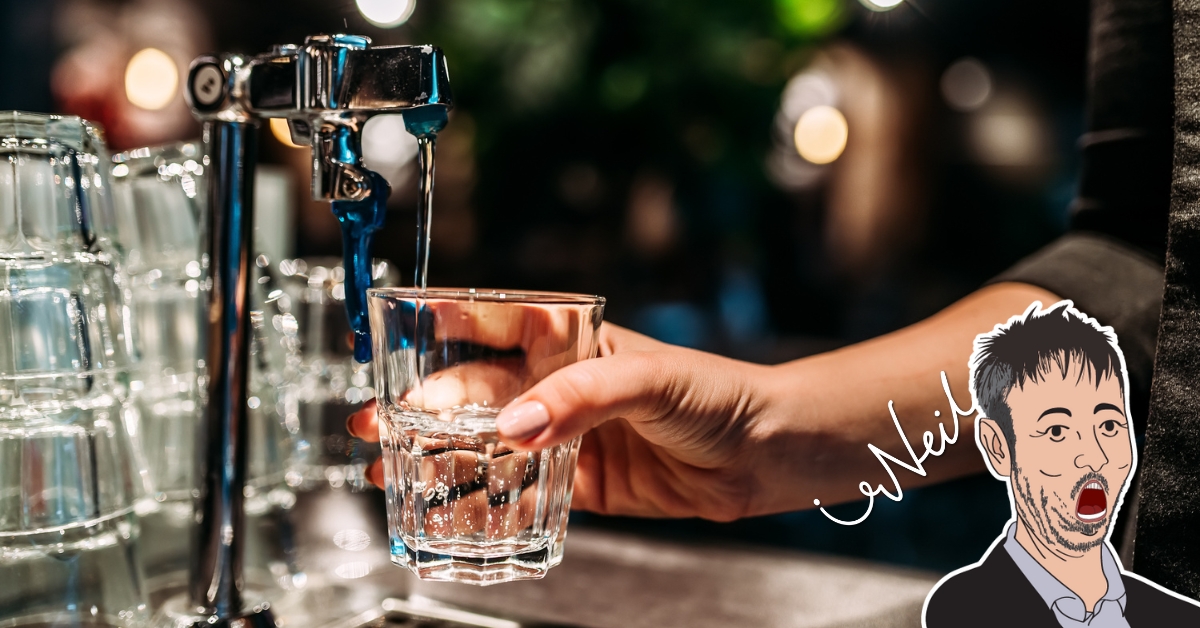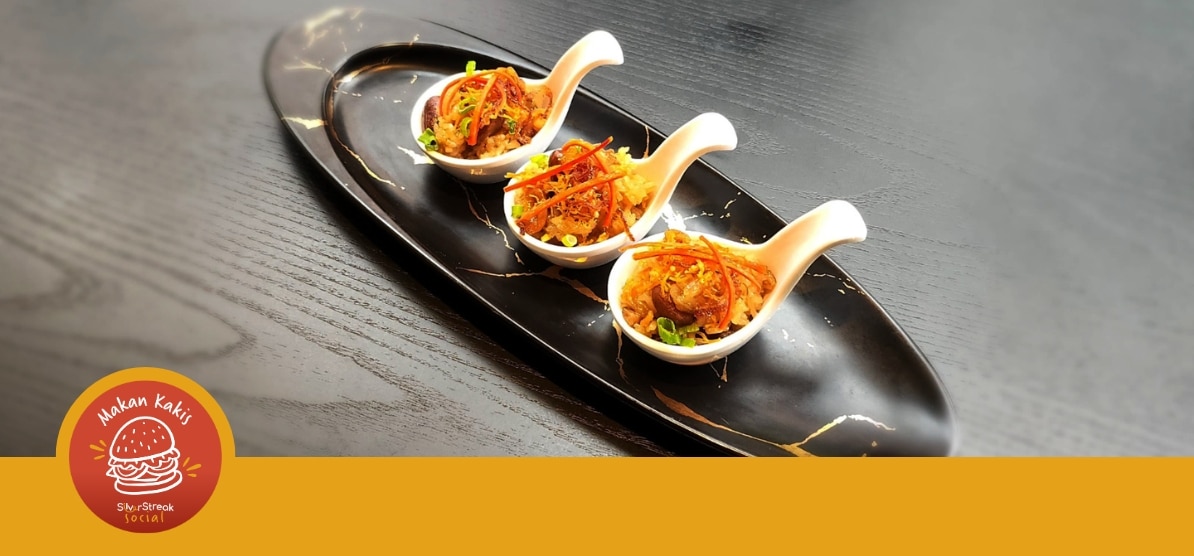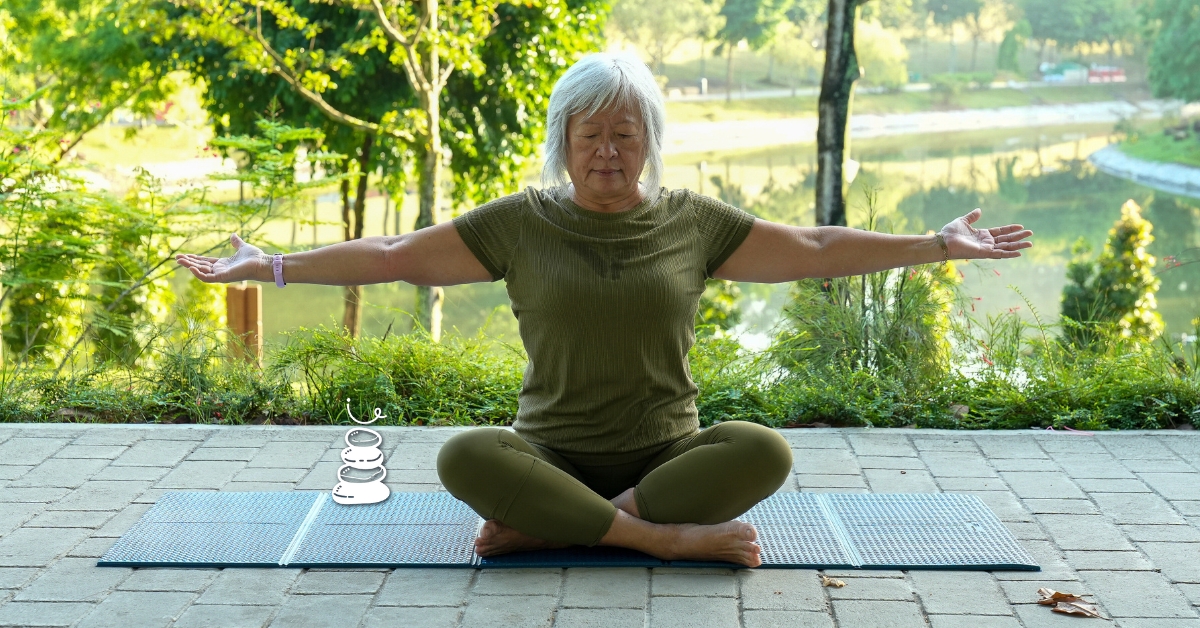
You don’t have to subscribe to the philosophy of yoga in order to benefit from its postures in the form of yoga therapy. I had no interest in yoga as a form of exercise in my thirties. But illness drew me to it. I had been stricken with such severe migraines, which were driving me out of my mind.
Doctors thought I might have a brain tumour. But it wasn’t so. They investigated and were perplexed.
In the end, they just said it was extreme stress. I was going through a divorce, and the emotional upheaval took a toll on my health.
Besides the migraines, I had other medical issues like endometriosis and bladder issues. I was a total wreck!
And I was only 31 years old.
Advertisement
The life-changing hour
I was fortunate that my then-colleague Sally invited me to attend a yoga class with her. I refused.
But Sally didn’t give up. She said, “What have you got to lose?” That one hour changed my life forever. (Sadly, when Sally moved to Australia in the days before the internet, we lost touch.)
After that first hour with an Indian guru, my migraines slowly dissipated. The guru simply gave me deep breathing exercises, which destressed me. I was amazed. Can simple breathing exercises remove pain? So, I returned to him weekly and he prescribed particular postures (called asanas in Sanskrit) and my health changed radically for the better.
I had not known that a physical discipline like yoga works on the body’s internal energy, (called prana in Sanskrit, or what Chinese knows as chi). I presumed wrongly that it was all about exercises that required me to tie myself up like a pretzel!
Not only did yoga eradicate my migraines, but it also changed my life. I am now 74 and can hike mountains, snow-ski, windsurf, sail, swim and yoga. I am no longer on any medication or supplements.
I practised yoga diligently every week for a year when I first started. After that, I was like a different person! I was calmer and happier too. It then occurred to me that I could study and train to be a yoga teacher to help others find relief.
Because I had moved to the UK, I looked up the British Wheel of Yoga (BWY), a body that promotes yoga as homeopathic healing. Training includes understanding physiology, some psychology, yogic philosophy and understanding of the physical and mental states, and mediation techniques.
In my yogic journey, I trained with many eminent gurus and teachers in UK as well as India, Nepal and Tibet. In particular, I trained with Dr Robin Munro of Yoga Medical Trust, who was running a holistic programme on relieving backaches and arthritis at London’s Royal Homeopathetic hospital in yoga therapy.
After gaining experience teaching classes in yoga, I decided to work one-to-one with my clients with both these ailments, as well as asthma and stress.
I have also written two books on yoga.
Of breathing and chakras
Contrary to popular belief, yoga is not about gaining a beautiful body.
New yoga practitioners tend to think that yoga is about executing extreme postures to show off physical prowess. This is so contradictory to holistic yoga. Afterall, the Sanskrit word for yoga is yuj, which means to yoke or unite.
The whole purpose of yoga is to unite the body and mind so that you achieve a heightened state of consciousness where you can be at your creative best.
To get to this, yoga uses the breath, to bring in fresh oxygen and positive ions to help regenerate cells and bring about relaxation.
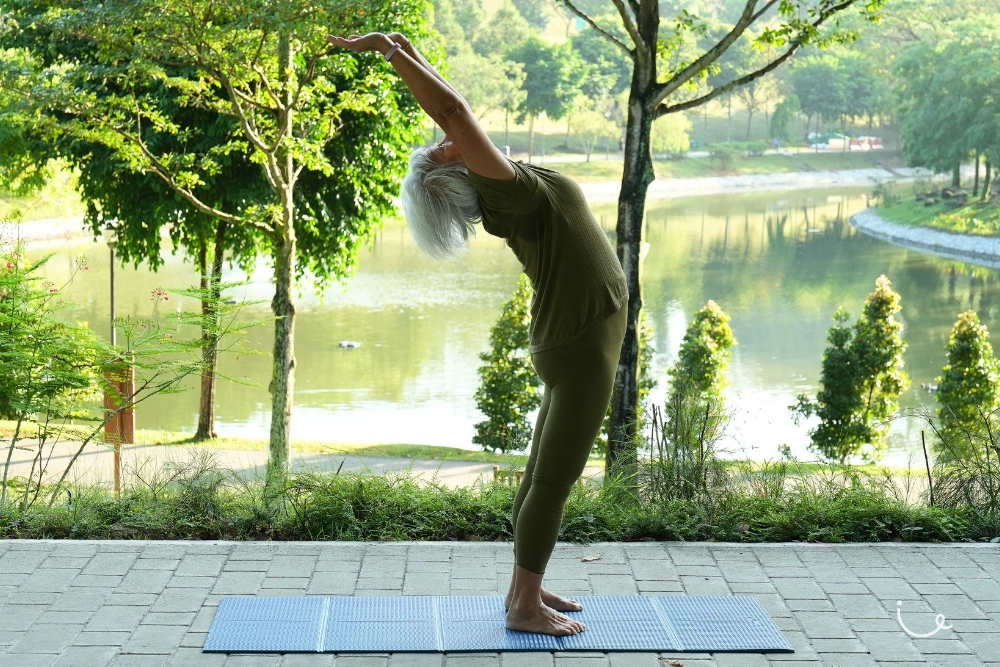
Besides the breath, yoga focuses on the health of the spine because of the seven major energy centres, called chakras, located along the spine.
In modern medicine, doctors discovered that these chakras mentioned by the yogis, which are not visible to the naked eye or medical scans, are located on the endocrine organs which produce hormones that contribute to our health.
The power of good posture
Your posture and gait can put on or take away years from you.
Check it out for yourself! Look at yourself in the mirror. Do your shoulders slump forward and your tummy round itself? When you create a soft “C” shape in your spine so that your back is curved unnaturally, you also put stress on the internal organs.
One of the most compressed nerves is the sciatic nerve, and the pain from this compression extends all the way down your leg.
Have you noticed how some people seem to get shorter as they age? Slouching or shuffling can make you appear much older than you are. Yoga will show you how to keep your chest and hips open naturally. If your spine is stretched well, you will look taller and feel taller. So, stand tall.

There are so many different postures to combat different conditions. Therefore, we are unable to cover them in one article. Here are two poses that are beneficial for most people.
(If you have any health issues, please be aware that certain postures may be unsuitable. Do then work with a qualified yoga professional or therapist on a one-to-one basis for further guidance.)
Simple yoga poses you can try
- Cat Pose (Majariasana)
Step One:
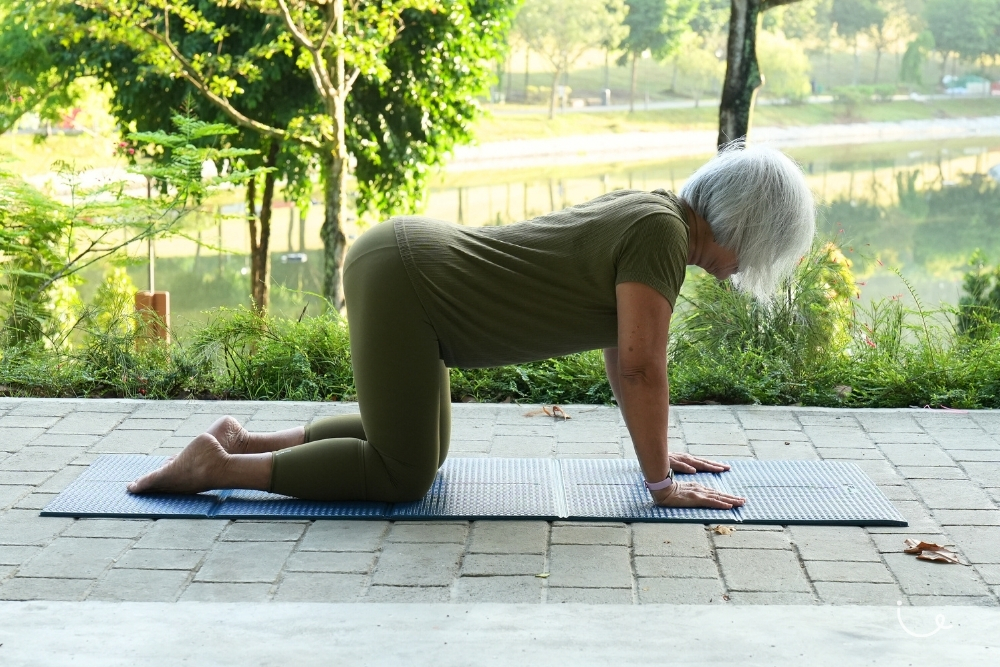
- Be on your all fours. (If your knees hurt, fold a soft blanket underneath your knees). Width between the hands is your own shoulder width. Width between the knees is your own hip width.
- Breathe in. Turn your head upwards. Allow the back to arch.
Step Two:
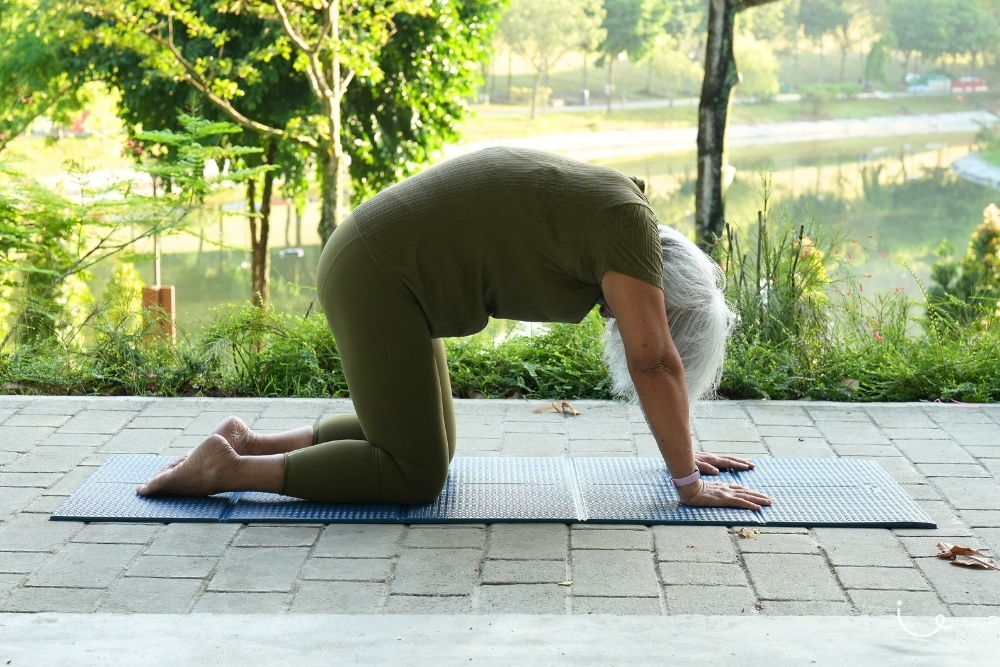
- Breathe out and allow your back to stretch into a hump. Drop your head between your shoulders (if possible). Pull your tummy muscles in. Hollow your tummy.
RELAX.
These two sequences make up one round. This exercise will stretch the spine well. Do each round at least one to three times daily. Rest in between each round with normal breathing.
Benefits:
- Stretches, strengthens and improves mobility of the spine
- Relieves back pain
- Improves flexibility of the neck
- Releases tension in the back and shoulders
- Tones core muscles
- Stimulates abdominal organs
- Increases blood circulation
- Strengthens wrists
- Promotes calming of the busy mind
- Regulates all the chakras on the spinal column
- Corpse Pose (Shavasana)
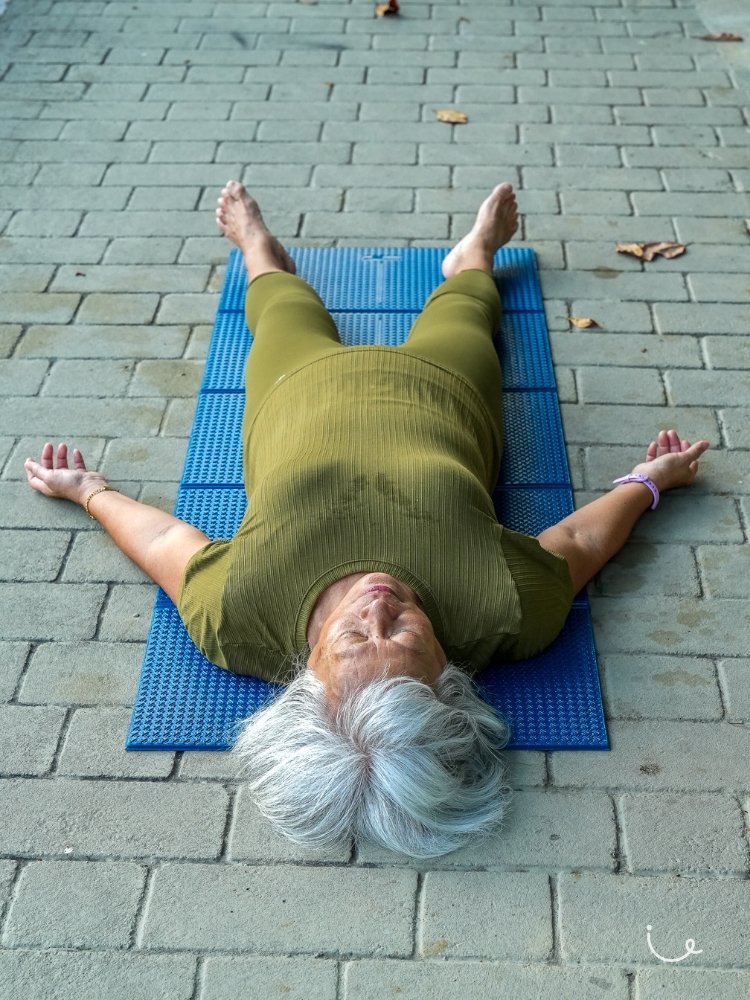
A yoga session always begins and ends with a few minutes of silence and relaxation. And the last pose is often the corpse pose, also known as shavasana.
You can lie on the floor, in a prone position. Open your palms and face them upwards. Legs should be relaxed; feet should drop slightly to the sides. The back of your neck should be relaxed, with the chin turned slightly towards your chest.
Then, close your eyes and mouth. Breathe in through the nose through both nostrils.
As you breathe in, mentally count 1-2-3-4. As you breathe out, mentally count 1-2-3-4. (You can increase to eight counts if comfortable). This is one round. Do ten rounds.
After that, relax and go back to normal gentle breathing. Keep watching your breath. Try not to let your thoughts dictate to you. Clear your mind.
Benefits:
- Calms the mind
- Allows the heart to go to resting heart rate
- Reduces stress and anxiety
- Leads to mindfulness and provides mental clarity
- Seating Pose
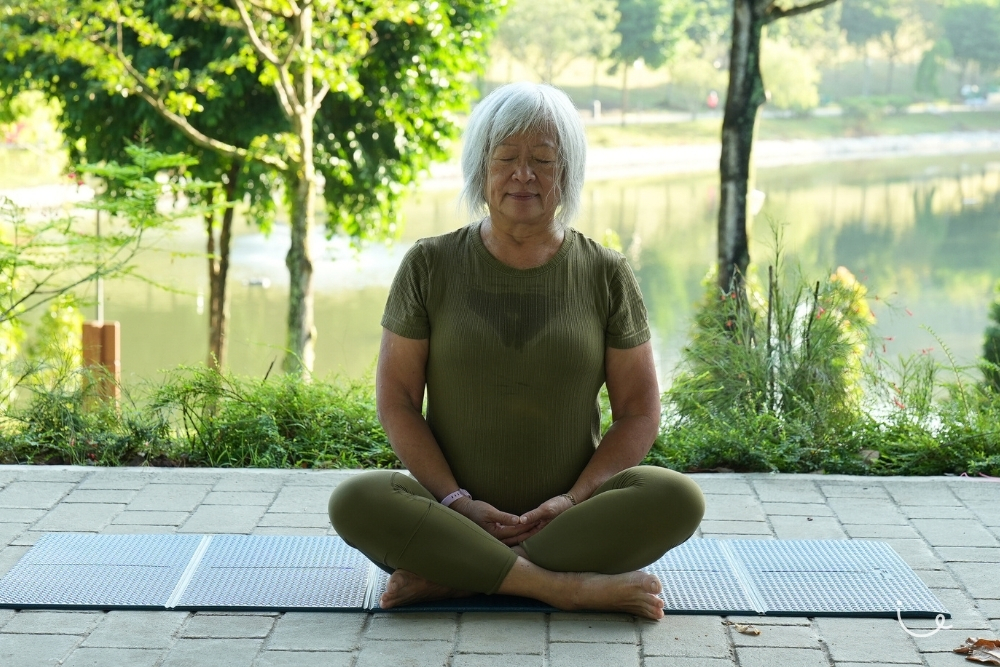
If you’re not able to lie down, you can also perform the above relaxation technique in a Seated Easy Pose. If your knees are causing any discomfort, fold a blanket or put a cushion under the knees.
Alternatively, you can do this seated in a chair, with your spine fairly straight, soles of feet resting on the floor. (Best not to do this on a sofa as your back tends to slouch.)

